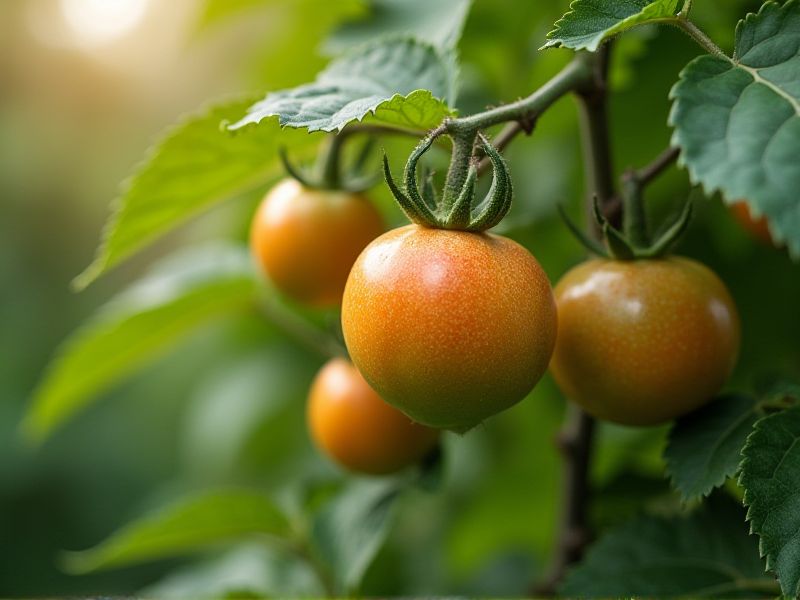
Shade-tolerant fruit-bearing plants thrive in low-light environments, allowing you to cultivate fruit even in less sunny areas. Some popular options include berries such as blackberries, raspberries, and strawberries, which can flourish under the canopy of taller trees. Other choices involve various tree species like pawpaw and serviceberry, offering delicious fruit while benefiting from partial sunlight. Planting native varieties enhances biodiversity and supports local wildlife, enriching your garden ecosystem. Consider the specific light conditions and moisture levels of your area to maximize fruit yield from these shade-loving plants.
List of some Fruit-bearing plants that grow in shade
- Black Elderberry (Sambucus nigra)
- Redcurrant (Ribes rubrum)
- Gooseberry (Ribes uva-crispa)
- Juneberry (Amelanchier alnifolia)
- American Hazelnut (Corylus americana)
- Wineberry (Rubus phoenicolasius)
- Blackcurrant (Ribes nigrum)
- Serviceberry (Amelanchier canadensis)
- Salmonberry (Rubus spectabilis)
- Dewberry (Rubus caesius)
Important things about Fruit-bearing plants that grow in shade
Light Requirements
Fruit-bearing plants that thrive in shade offer a unique solution for gardeners with limited sunlight exposure. Varieties such as raspberries, blackberries, and certain cultivars of blueberries can flourish in partial to full shade, producing delicious fruits even in low-light conditions. These plants typically require around four to six hours of indirect sunlight daily, allowing them to produce fruit without the stress of intense heat. When selecting shade-tolerant options, consider incorporating companion plants that can enhance soil quality and moisture retention, optimizing overall growth and yield.
Soil Type And Drainage
Choosing the right soil type is crucial for fruit-bearing plants that thrive in shaded areas; well-draining loamy soil is ideal as it retains moisture while preventing root rot. Incorporating organic matter, like compost, enhances nutrient availability and improves soil structure, facilitating better drainage. While some fruits, like berries and certain apples, can tolerate partial shade, their yield significantly increases with optimal drainage and nutrient-rich soil. Regularly testing your soil pH and moisture levels allows you to create the best environment for your shaded fruit garden, ensuring robust growth and plentiful harvests.
Pollination Needs
Fruit-bearing plants that thrive in shade often rely on specific pollination strategies to produce quality yields. For example, plants like blackberries and raspberries attract pollinators such as honeybees and native bees, which are essential for maximizing fruit set. These shaded environments, often found under the canopy of taller trees, provide a cooler microclimate that can help fruit development. If you're cultivating shade-tolerant fruit plants, planting companion flowers can enhance pollinator attraction and lead to a more fruitful harvest.
Disease Resistance
Fruit-bearing plants that thrive in shaded environments can exhibit enhanced disease resistance due to reduced stress from intense sunlight. Varieties like black currents, brambles, and certain types of gooseberries are particularly well-suited for low-light conditions and often develop robust immune systems. Lower temperatures and humidity levels in shaded areas can inhibit the growth of fungal pathogens, thereby minimizing risks of diseases such as powdery mildew or botrytis. By choosing disease-resistant cultivars and employing proper soil management, you can cultivate a healthy yield of fruits even in partially shaded gardens.
Growth Habits
Fruit-bearing plants that thrive in shade include varieties such as blackberries, raspberries, and currants, each offering delicious yields. These plants adapted to lower light conditions often develop broader leaves to capture more sunlight, which enhances their fruit production. By selecting soil rich in organic matter and ensuring adequate moisture, you can optimize their growth. Planting these species in dappled sunlight or areas with morning sun will significantly improve both their health and fruit quality.
Fruit Varieties Suitable For Shade
Certain fruit-bearing plants thrive beautifully in shaded environments, making them perfect for gardens with limited sunlight. For instance, berry-producing varieties such as currants, gooseberries, and hardy kiwis are well-adapted to partial shade, allowing you to enjoy fresh harvests even in less-than-ideal lighting conditions. Additionally, the tart and sweet flavors of raspberries and blackberries can also flourish with some protection from direct sunlight. When planning your garden, consider planting these varieties to maximize your fruit yield while enhancing the shaded areas of your landscape.
Pruning Techniques
Pruning techniques for fruit-bearing plants that thrive in shaded environments play a crucial role in maximizing yield and maintaining plant health. Focus on removing dead or overcrowded branches to enhance air circulation and light penetration, which are essential for fruit development. You should also aim to shape the plant to avoid excessive shading of lower fruiting areas, promoting even ripening across all fruit. Regular monitoring and seasonal pruning will ensure that the plants remain productive even in less-than-ideal lighting conditions.
Companion Planting Benefits
Companion planting can significantly enhance the growth of fruit-bearing plants in shaded environments, promoting a healthier ecosystem. For instance, strawberries thrive when planted alongside borage, which improves their flavor and attracts beneficial pollinators. Raspberries do particularly well in the company of garlic, as the latter deters aphids and other pests, ensuring sturdy fruit production. By understanding the ideal pairings, you can maximize your yield even in less-than-ideal light conditions.
Fertilization Needs
Fruit-bearing plants that thrive in shade include varieties such as blackberries, raspberries, and certain types of strawberries. These plants often require well-draining soil rich in organic matter to optimize growth and fruit production. Fertilization for shade-loving fruits typically involves the use of balanced fertilizers that provide essential nutrients, particularly nitrogen, phosphorus, and potassium, which support healthy foliage and abundant fruiting. Regular soil testing can help determine specific nutrient needs, ensuring your plants receive the right care for optimal yield in shaded environments.
Harvesting Methods
When harvesting fruit-bearing plants that thrive in shaded environments, careful timing is crucial to ensure optimal flavor and texture. Techniques such as hand-picking are often employed to minimize damage to fruits like blackberries and currants, which are commonly found in shaded areas. Utilizing soft baskets helps protect the delicate fruit from bruising during harvest. It's also essential to monitor the microclimate around your plants, as variations in light and moisture levels can affect the quality and quantity of your harvest.
